Everyone has done at least one thing they regret or wish everyone would forget. The same goes for nations. States that have existed for centuries or millennia are bound to have a few skeletons in the closet that they wish everyone would just ignore. But unfortunately, some things are easier to forget than others.
Whether these events are too fresh in our memories or so horrific, we try our best not to think about them from time to time. We cannot forget that they happened, even if the countries responsible for them want us to.
10. The departure of the Afghans

One of the most recent historical events that many countries would like you to forget is the withdrawal of troops from Afghanistan in 2021. While several countries participated in the withdrawal, the United States bore the heaviest burden of what was considered a complete and utter failure.
In 2020, the decision was made to withdraw troops from the Middle Eastern country. However, things got complicated when the administration changed, abandoning the 2020 agreement to give them more time to get it right. But as we know, things didn’t go as planned. Intelligence always predicted that the Taliban would succeed in retaking power in the country; they just didn’t realize it would take days.
As soon as the troops began to withdraw, the situation quickly deteriorated. The Taliban advanced into the countryside and began attacking key cities. Afghan forces, trained by the US military, were unable to stop the advance due to low morale, casualties from US airstrikes and internal distrust. As Kabul came under attack, Afghan President Ashraf Ghani fled the country. We would soon see thousands of Afghan citizens attempting to flee and taking drastic measures to achieve freedom. Some attempts were fatal, and who could forget the images of people hanging from aircraft carriers as they fled the country?
The 20-year war ended, but left the country in a terrible state and on the verge of collapse. The United States suffered greatly from a largely unsuccessful war and a disorderly retreat.
9. Italy's participation in World War II

When we think about World War II, it’s understandably hard not to immediately focus on Germany. But we rarely talk about Italy’s involvement in the war, which ends up on the wrong side of history.
In June 1940, Italy officially entered the war, but on the side of Germany. Prime Minister Benito Mussolini sided with the winner, hoping to get a piece of the conquered lands? They immediately began fighting the war with Germany, but the Franco-German armistice almost immediately ended their efforts in the French Alps. In October, Mussolini invaded Greece, which ended badly after Germany was forced to bail out Italian troops and take Greece by force themselves.
Italy's involvement in World War II was horrific. Mussolini's war effort was hampered by incompetent generals, low morale, low supplies, a shortage of weapons, and the fury of the Allies. Moreover, by allying Italy with Adolf Hitler, Mussolini created the pretext for his own downfall. By 1943, Italy was in dire straits. They were being bombed constantly, morale was low, and there was little confidence in the regime. The Allies finally invaded Sicily in July 1943, Mussolini was ousted on July 25, and Pietro Badoglio took over.
Citizens took to the streets, tearing down statues of Mussolini and other fascist symbols. Eventually, Badoglio joined the Allies. However, Germany continued to fight, now taking Italy by force, leading to a two-year campaign for control of Italy. The war ended in 1945, and although Germany bears the mark of the war and will continue to do so, Italy's role in the early years of World War II has not been forgotten.
8. Japan's attack on Pearl Harbor
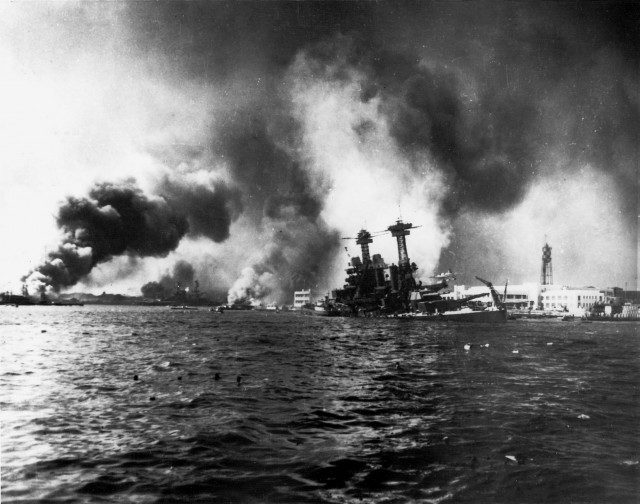
Japan was another victim of choosing the wrong side of history during World War II. Japan and the United States were not allies long before the war, and in some ways they themselves were leaning toward war. Japan was a warlike nation at the time, unlike the Japan we know today. They were looking to expand their empire, so in 1937 they declared war on China. The United States responded aggressively with economic sanctions, trade embargoes, and other diplomatic measures. These efforts were supposed to force the Japanese to agree to a ceasefire and give up their ambitions for expansion; they had the opposite effect. They made the Japanese more determined to win.
Relations between the two countries had been ugly in the run-up to the war. Now they were at breaking point. The likelihood of a Japanese attack had initially been assumed to be imminent, but there was much debate about where it might happen. One location that was almost never considered was far from the U.S. mainland in Hawaii: the Pearl Harbor Naval Base. Ignoring a potential attack on Pearl Harbor meant the base was woefully unprepared.
On December 7, 1941, Pearl Harbor was attacked by the Japanese at 7:55 a.m. This took the entire area by surprise. There were concerns about a flotilla of planes heading to Pearl Harbor. However, these concerns were allayed when commanders decided that the only planes likely flying in the area were American B-17 bombers, so there was nothing to worry about.
The attack on Pearl Harbor lasted only an hour and fifteen minutes. Yet 353 Japanese planes were enough to kill 2,403 American servicemen and several civilians, injure another 1,178, damage or destroy 19 U.S. Navy ships (three of which were completely destroyed), and shake the nation to its foundations. The outrageous attack prompted a U.S. response. Although things are very different today, December 7 remains a day that lives in infamy.
7. Chernobyl

In 1986, the former Soviet republic of Ukraine suffered its worst nuclear accident in history. It was on April 25 when technicians attempted to test the safety of the plant’s emergency water cooling systems. The test was designed to determine whether the emergency water cooling systems would work in the event of a power outage. Unfortunately, the situation quickly deteriorated.
Preparations for the safety test began early on the morning of April 25. At 14:00, they shut down the emergency cooling system for the reactor 4 core. Due to delays, they were eventually cleared to continue the safety test. However, the delay meant that the safety check was left in the hands of the inexperienced night shift.
Once they started the test, they reduced the power even further, creating unstable conditions. An hour later, this caused the core of reactor 4 to explode. The fire caused by the explosion caused the uranium fuel to overheat and melt through the protective barriers. The safety test operators ignored the automatic safety systems, assuming that the system did not understand the safety test.
The disaster began at 1:23 a.m. Officials immediately misrepresented or downplayed the disaster. The fires were out by 6:35 a.m., except for a reactor core fire that raged for days after the disaster. Soviet authorities began evacuating Pripyat on April 27. The international community eventually acknowledged that 31 people had died. That does not include the estimated 125,000 people who died as a result of exposure to Chernobyl radiation.
Chernobyl was a disaster caused by a flawed reactor design and poorly trained personnel. At a time when the USSR was in dire straits, it was a financial blow to the regime that Gorbachev credits with catalyzing the collapse of the USSR.
6. The Fall of Saigon
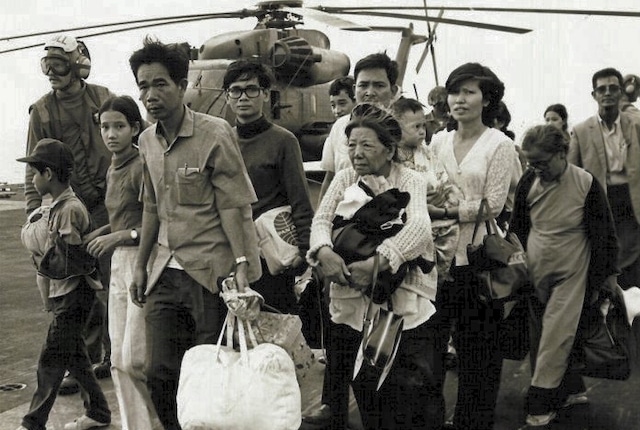
As the troop withdrawal from Afghanistan unfolded in 2021, many began drawing comparisons to another hasty exit from a failed war: Saigon. The Vietnam War has a long history in the United States, spanning decades under four different presidents. However, it was the fifth president who laid the groundwork for U.S. involvement. Harry Truman was not the president who sent an entire infantry force to war during the fall of French colonial rule, but he did heavily fund their efforts. However, the collapse of colonial rule and the rise of communism in Asia prompted Eisenhower to fully support South Vietnam, even if their leaders’ ambitions ultimately conflicted with American values.
For decades, the U.S. had been pouring troops, military aid, intelligence, and training into Vietnam. President Kennedy stepped up these efforts to ensure that Vietnam did not fall, fearing a domino effect of countries falling to communism. In the 1950s, the troop level was fewer than 800; by 1962, that number had jumped to 9,000.
President after president went to war in Vietnam more out of fear of failure than out of confidence in victory. No one wanted to point fingers, and so it went on. When Nixon was president, he oversaw some of the most destructive aspects of the war. While he was drawing down troops, he dropped unprecedented numbers of bombs across North Vietnam and Cambodia.
As Nixon's presidency crumbled under the weight of Watergate, the U.S. negotiated and signed a peace treaty for all sides in the war. However, after U.S. troops withdrew in March 1973, the communists broke the treaty, seeing cracks in the U.S.'s ability to respond. As a result, they took over the country. The U.S. left the world with the heartbreaking and infamous image of American personnel retreating in haste as the country fell to communism after decades of war.
5. Weapons of Mass Destruction in Iraq

It was March 19, 2003, when the United States and a small group of allies went to war with Iraq. Then-President George W. Bush had been declaring his intentions in the Middle Eastern country for months. On February 5 that year, Secretary of State Colin Powell gave a speech at the United Nations outlining the goals and reasons for the U.S. invasion of Iraq. There was just one problem, much of what he said was either misleading or just outright lies.
The Bush administration mounted a domestic effort, led by Vice President Dick Cheney and Defense Secretary Donald Rumsfeld, to remove Iraqi President Saddam Hussein. Of course, the international community did not like Hussein, but that did not necessarily justify the invasion effort. Instead, Bush used the September 11 attacks to launch a “war on terror.” In the case of Iraq, he also used incomplete or inconsistent evidence or poorly supported claims of a “massive stockpile of biological weapons” to justify the coming invasion. Many more would be piled on top of that lie over the next five years.
Although the Iraq war ended in 2011, less than a decade after it began, questions and criticism persist. In 2016, the UK government publishedThe Chilcot Report . It was a report seven years in the making, examining the decision, necessity, and consequences of the invasion. All the evidence pointed to an obvious truth: not only was it a complete disaster, but if anything, it had the potential to make the region more unstable. In the end, the evidence was hard to deny; the war was unnecessary, and the end results were disastrous. In many ways, the U.S. has made some of the worst foreign policy decisions in the last two decades.
4. The USSR failed to invade Afghanistan
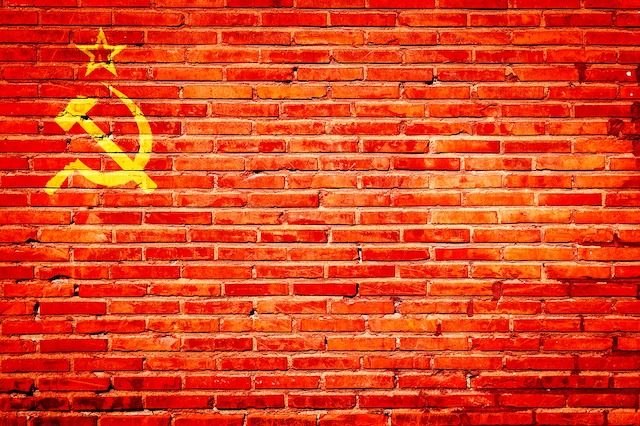
While we focus squarely on the recent attempts to invade Afghanistan, we often say little about how this has been attempted several times before, by both the British and the Soviet Union. All attempts to invade and conquer Afghanistan have ultimately failed.
In 1979, under the pretext of honoring the Soviet-Afghan Friendship Treaty, the USSR invaded Afghanistan. They invaded in the dead of night, arriving in Kabul at midnight via a military airlift. They brought in roughly three divisions of 8,500 men each and 280 transport planes. The Soviets initially had some success when they captured Kabul, ridding the country of its government and installing a puppet leader. However, over the course of nearly a decade of invasion, they ultimately failed in the Middle Eastern country.
The Afghan people, especially the resistance fighters known as the mujahideen, had no interest in Soviet rule and considered it a desecration of Islam. The mujahideen used guerrilla tactics against the Soviets, attacking quickly before disappearing into the mountains. This made the conflict much more difficult and drawn out for the Soviets, who had hoped for a quick takeover.
The war continued into the late 1980s, with the United States arming the resistance in keeping with its anti-Soviet stance. Finally, when Mikhail Gorbachev was declared the new Soviet leader, he withdrew from the conflict, realizing its futility. By 1988, they began to withdraw, and the last Soviet soldier left on February 15, 1989. The results of this failed war were disastrous for the USSR's public relations and finances. In many ways, it became the pretext for the collapse of the USSR. However, worst of all, it became the catalyst for the breeding ground of terrorism that became Afghanistan with the rise of Osama bin Laden.
3. The US drops nuclear bombs on Japan
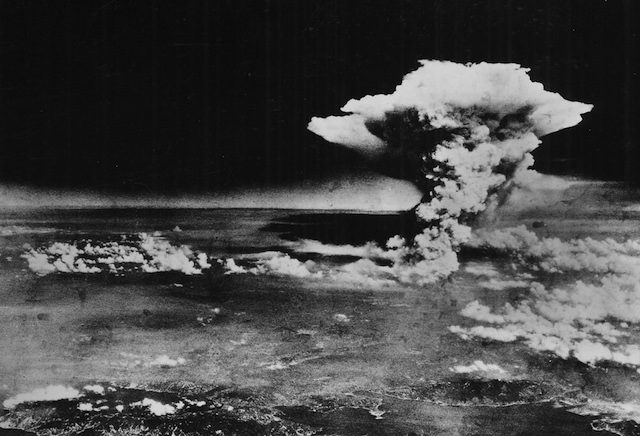
The United States and Japan are allies today, but their relationship during World War II was not so friendly. This was evident, of course, after Japan attacked Pearl Harbor. So, of course, we could see the dropping of nuclear bombs on Hiroshima and Nagasaki as retaliation for Pearl Harbor. It was more complicated than just revenge, after all.
The United States had been working on nuclear weapons long before the attack on Pearl Harbor because of Ellie's concerns about Nazi Germany's research in the field. When the Allied Powers defeated Nazi Germany, Japan vowed to fight to the bitter end. Although Japan faced demands to end the war, it rejected the idea of surrender. President Harry Truman decided that in the face of stiff Japanese opposition, he would use the bomb in the hopes that it could end the war once and for all. His Secretary of War, General Eisenhower, and the scientists of the infamous Manhattan Project opposed the idea.
On August 6, 1945, Little Boy was dropped on Hiroshima. It was the first city ever hit by a nuclear bomb. It took 45 seconds to descend, causing massive destruction in the industrial city. 70,000 citizens were killed instantly, and many more died from radiation poisoning.
A few days later, on August 9, 1945, another bomb, called "Fat Man," was dropped on Nagasaki, a city divided into two coastal valleys. 40,000 people were killed instantly, and another 30,000 are estimated to have died from injuries and radiation poisoning.
On August 14, 1945, the Japanese surrendered shortly after the attack on Nagasaki. However, the United States was left with a controversial scar from using the first iterations of this weapon of mass destruction against what is now its ally.
2. The Armenian Genocide of 1915.
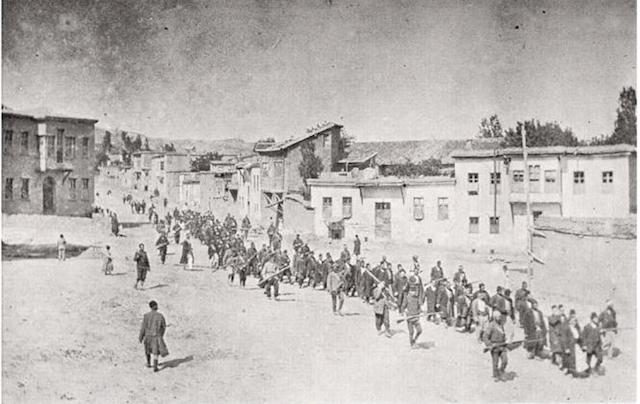
In 2021, US President Joe Biden called the 1915 massacre of some 600,000 Armenians a genocide carried out by the Ottoman Empire, which is now Turkey. No president had ever called it a genocide. It was unexpected, given Turkey’s status in NATO and the already fractured relations between the two allies. Turkey quickly responded by rejecting the US president’s statement. Still, the story attracted a lot of attention. It brought attention to the horrific aspect of the Ottoman Empire’s decline during World War I.
In 1915, there were about 2.5 million Armenians living in the Ottoman Empire. They were concentrated around six provinces in eastern Anatolia. Armenians were familiar with harsh treatment at the hands of their Muslim neighbors and compatriots. They were often subjected to violence and confiscation of land, property, or livestock.
This imbalance in the Ottoman Empire between Muslims and Armenians eventually led to the emergence of separate factions calling for different solutions. Young Armenian activists sought an independent state, while a coalition of reformist groups known as the Young Turks led a revolution against the Ottoman authoritarian regime. They eventually came to power and, while seeking to change the Ottoman Empire for the better, soon slid into authoritarianism.
In March 1914, the Young Turks sided with Germany in the war and attacked east in a brutal, unsuccessful attack on Russian forces in the Caucasus. The blame was shifted to the Armenians, who launched a campaign against them that resulted in genocide. The death toll is still debated, with some estimates putting it at 600,000 and others at 1.2 million. The Ottoman Empire fell in 1922, but the stain on independent Turkey has remained for more than a century.
1. The collapse of the USSR

The fall of the USSR is considered a disgrace by many Russians, including current President Vladimir Putin. The Soviet Union began in the 1920s with the Marxist revolutionary Vladimir Lenin. It was born out of a revolution against the Romanov monarchy and would become, in the coming decades, a powerful Marxist-communist state occupying nearly a sixth of the globe.
When Lenin died in 1924, a new leader took his place: Joseph Stalin. He controlled the USSR for just three decades before his death in 1953. During his time in power, the USSR became a military and industrial superpower. But it also saw the consolidation of critical industries, leading to food shortages, widespread famine, and death. All of this occurred against a backdrop of ethnic strife.
At the end of World War II, the USSR denigrated its alliance with the United States and Britain. With the formation of NATO in 1949, tensions only increased. Democracies feared the spread of communism, and the threat of nuclear catastrophe was ever present. As the USSR consolidated power among the Eastern Bloc countries, it sparked the Cold War and decades of tension between the superpowers.
In 1985, Mikhail Gorbachev became the titular head of the USSR. He sought to reform a faltering nation that had lost its way. Many of Gorbachev's policy changes tore the USSR away from its deep communist roots and destroyed much of Stalin's legacy.
It was becoming clear that the Soviet Union was falling apart, and Gorbachev knew that rejoining the international community was the only way to save it. But this recognition led to an attempted military coup against Gorbachev in 1991. During this period, parliamentary leader Boris Yeltsin played a major role in preventing the coup. He eventually allowed Ukraine and Belarus to seek independence from the Soviet Union. Soon after, the nine remaining republics also declared their independence. On Christmas Day 1991, Gorbachev resigned, and the Soviet Union officially dissolved.












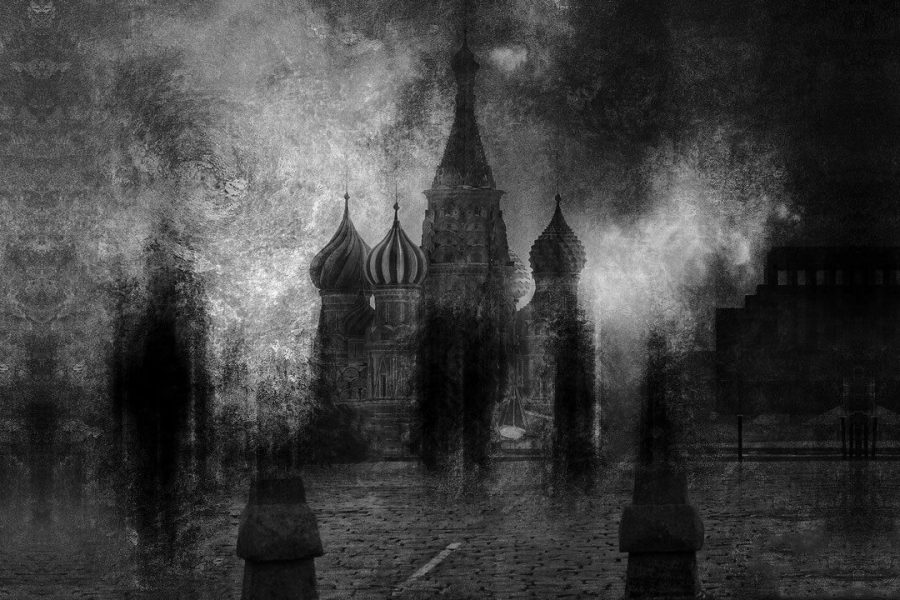
Оставить Комментарий